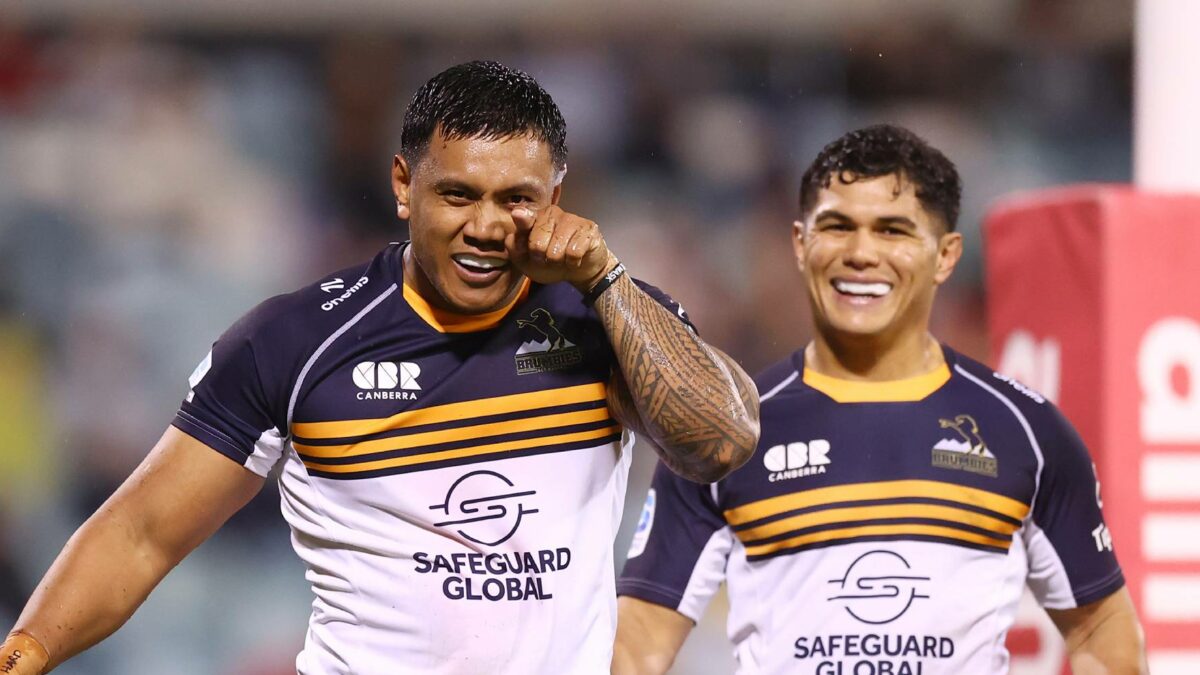Australian rugby’s international success was built on brains not brawn.
Here are five principles I propose as common sense for a new initiative – ‘Super Rugby Downunder’.
First, clear separation of oversight of ‘amateur/foundation’ rugby and ‘professional/elite’ rugby.
Second, make the game as attractive, inclusive and safe as practical, for players and fans.
Third, one professional competition only.
Fourth, limit its costs.
Fifth, never again make the Wallabies responsible for rugby’s popularity, viability or sustainability (an exceptionally dumb strategy).
The 1st principle requires State and Territory bodies to relinquish, such roles as they have, in overseeing professional rugby. Their roles can then focus exclusively on clubs and schools.
Rugby Australia would be responsible for both contracting and funding all player salaries; with ultimate oversight of the distribution of players between Super Rugby Downunder’s ‘provinces’. Rugby Australia would also be responsible for provincial level coaching appointments and remuneration (and maintenance of a national coaching/refereeing academy). Whilst State and Territory bodies would no longer control player advancement to pro-rugby, they would now be under pressure to perform (or risk being replaced in their remaining roles by ‘new provinces’).
The 2nd principle (‘attractive rugby’) is enabled by the 3rd (‘our own comp’). Rugby Downunder can dispense with European laws which have degraded southern rugby. Stuff legal evolution: The culture should be “try this – it if does not work, drop it”. Oz becomes ‘the world’s trialist’.
Any balanced domestic comp cannot have teams for Queensland or New South Wales. The inaugural comp should be comprised of teams foreseeable, as long term DNA for Australian pro-rugby. Exception: Once the comp is proven, full-funding by DFAT, of a Pacific Island team?
Eight teams playing three rounds. One home game. One away game. Optional location for third game. Season of 21 weeks, plus two weekends for semi-finals and grand-final. Total 23 weeks.
Resolve the Giteau rule. Select anyone, no matter where they play. But players lose Wallaby eligibility if they sign a contract requiring them to play an offshore game before their 26th birthday (or if the contract does not guarantee their availability for selection by the Wallabies).
Solve the Pay TV / Free-to-Air conundrum. Geographic segmentation of games: Free-to-Air viewers get access to ‘away games’ for the team(s) best reflecting their location. Broadcasts end with players inviting viewers to attend the next home game, or to alternatively watch it on Pay TV.
It would be foolish to ignore the success of State of Origin. Run rugby’s version the same way – midweek during the regular competition season. Showcase three different games. Queensland v New South Wales; Queensland v Aussie Barbarians (ACT/NT/SA/Tas/Vic/WA); New South Wales v Aussie Barbarians. Staged in weeks immediately following NRL State of Origin games.
Selection of ‘State of Origin’ players would rest with the Wallaby Selectors. Coaches would be appointed by the underlying province (of a given State of Origin team) which then sits highest on Rugby Downunder’s ladder (appointment of a Brumbies coach would be for the Barbarians). The Wallaby coach is responsible for announcing ‘which rules’ will govern that year’s State of Origin.
No remuneration top-ups paid, for playing/coaching State of Origin, in Super Rugby Downunder.
Super Rugby Downunder’s indicative teams:
Sydney Dragons (emblem: native water dragon) playing mainly out of Moore Park. Representing Eastern Suburbs, Sutherland Shire, Inner Sydney as far west as Old Canterbury Road. North Sydney Bears (emblem: dignified Blinky Bill in rugby outfit) playing primarily out of North Sydney Oval. Representing Sydney north of the Harbour as far west as the Lane Cove River catchment. Western Sydney Magpies playing primarily out of Parramatta Stadium represent everyone else.
The Australian Brumbies, training in Canberra: “Please welcome, representing the Australian Capital Territory; and the New South Wales North, South, and Central Coasts, the Hunter Valley, the Illawarra, every New South Welshman and woman living west of the Divide; the Brumbies!”.

(Photo by Mark Nolan/Getty Images)
Brisbane City Kings (emblem: ‘15-pointed-coronet’-atop-‘XV’), playing primarily out of Suncorp Stadium. Representing Brisbane and Morton Bay Local Government Areas (Brisbane’s ‘outer LGAs’ are excluded).
The Bulls (emblem Queenslander – Red Brahman/Droughtmaster cattle) training at Ballymore: “Please welcome, representing all Northern Territorians; and Queenslanders from Redcliffe to Cape York, from Bundaberg to Birdsville, from Cunnamulla to Surfers Paradise; the Bulls!”.
Justification of teams in Perth and Melbourne remains primarily TV audiences. They need to embrace the rest of Oz: ‘Southern Cross Sharks’ for Victoria, South Australia and Tasmania?
Align any overseas recruitment for Rugby Downunder teams on a basis that is consistent with tribalism. Eg: Only Africans in Perth; Only Islanders in Melbourne; Only JRL players in Canberra.
Apply the five principles, and watch rugby thrive.

